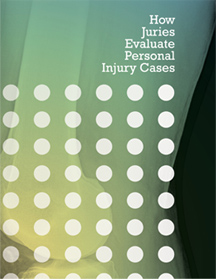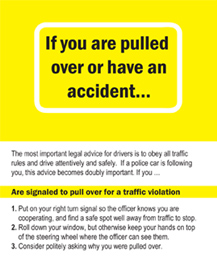Common Terminology
The following terms are commonly used by personal injury attorneys and experts in slip and fall cases.
Baluster: The vertical bars or posts on a flight of stairs that support a handrail.
Exit: Every doorway, corridor, walkway, stairway, ramp, courtyard or exit court leading from a covered building to a public way; that portion of a means of egress that is separated from all other spaces of a building or structure by construction and opening protection required for exits to provide a protected way of travel to the exit discharge.
Exit access: That portion of a means of egress that leads to an entrance or to an exit.
Exit discharge: That portion of a means of egress between the termination of an exit and a public way.
Flight: A series of steps without an intervening platform.
Force: Amount of pressure applied by the foot when ascending or descending a stairway.
Handrail: Structural member parallel to the slope of a stairway to grasp during ascent or descent.
Landing: The floor at the top or bottom of a stairway or a platform between the flights of the stairway.
Means of egress: A continuous and unobstructed path of travel from any point in a building or structure to a public way. A means of egress consists of three separate and distinct parts—the exit access, exit and exit discharge—and shall include intervening room spaces, doors, hallways, corridors, passageways, balconies, ramps, stairs, enclosures, lobbies, horizontal exits, courts and yards.
Nose, nosing: The projection of the front edge of the treads beyond the face of the riser.
Orientation edge: An abrupt change from enclosed surroundings to an open, unrestricted view of a larger space; a vertical or horizontal architectural feature that serves as a visual reference to the pedestrian.
Overhang: The projection of the tread beyond the back edge of the tread below.
Public way: An area over 10 feet wide, open from the ground to the sky, dedicated for public use.
Ramp: An inclined plane for the passage of pedestrian traffic.
Rise: The vertical distance from the top of one tread to the top of the next tread.
Riser: The vertical face of a step.
Run: The horizontal distance from vertical riser to vertical riser, or from nose tip to nose tip.
Slope: Inclined plane of stairs or ramp established by the relationship of the riser to the run.
Soffit: The horizontal underside of an eave or cornice.
Stair: A series of steps, or flights of steps connected by landings, for passing from one level to another.
Staircase: Stair; also used to include entire structure including railings, balusters, and so on.
Stairway: Stair or staircase.
Stairwell: The space in the building occupied by the stair.
Step: Single unit of level change in a stair consisting of one riser and one tread.
Tread: The horizontal surface of a step or the structural member forming this surface.



